#which is kind of funny given we often get blockbusters before the rest of the world
Explore tagged Tumblr posts
Note
Have you seen Conclave? :)
I haven’t yet, anon, but I’m really keen to! It doesn’t come out in Australia until January </3
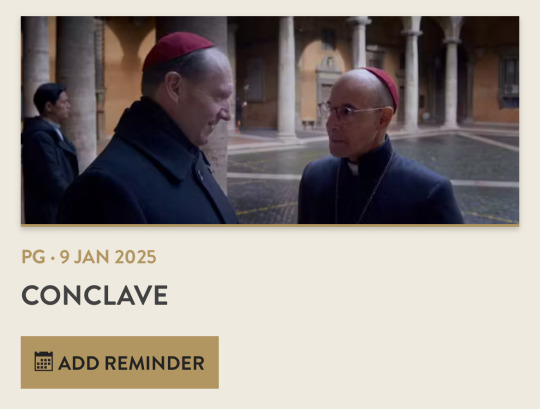
I go to the cinema every Tuesday though, so I’ll definitely see it when it comes out. My last few were The Apprentice two weeks ago, an Aboriginal Australian horror film, The Moogai, last week annnd tomorrow will be Saturday Night, which looks fun.
I’m also seeing Timestalker at the British Film Festival and a Q&A screening of a new Australian documentary, The Pool this weekend, so a big movie week for me!
#most of the awards movies come out super late here#which is kind of funny given we often get blockbusters before the rest of the world#film distribution schedules are odd#anyway excited to see Jacob in Timestalker on Saturday!#and excited to see conclave in January!#film asks
1 note
·
View note
Text
The Lutrudis Hadeer Design Concept Masterpost

Every now and then, I get the occasional question about my very own Lutrudis, which I'm always gladly willing to answer. Yet for all the times I've answered such questions, it seems some folks are still a bit left in the dark as to how Trudy came to be. So I figured I could make one big post all about the creation process. Maybe not every single detail per say, but at least everything that I think is worth mentioning in a post of this sort.
I'm aware that fellow pal @benignmilitancy covered this subject herself recently, but I might as well do my part to back up what she said.
1. When did Lutrudis become an idea?
The basic idea for Lutrudis - and indeed, the setting of Viridonia and Beyond the Stars itself as a story - was thought up as early as 2014. When I say basic idea however, I really do mean it, as aside from the general concept of her being the latest Friend of the Week helping Sonic and Co fight evil on her home island, very little else about Trudy was set up, including her name and species. While some aspects of her personality were already set in stone by that point, I focused on the design first when I decided to go ahead and make her and Beyond the Stars a real thing. The idea being to use what personality traits I had in mind to create a mental image, then use that mental image to help figure out the rest of her traits, as a design can often help out with working out a personality.
So basically, I scratched my back, so that I could scratch it again. Made sense to me.
2. Why a horse? Is it because friendship is magic?
Maybe...

Actually, I wanted a species that hadn't been used before, at least in the games, its continuity being the one Beyond the Stars takes place in. But at the same time, I also wanted to go with a fairly mundane species rather than anything rare, extinct, or extravagant, as I felt that the latter would undermine the story arc that I had in mind for this particular character. Compared to the likes of Sonic, Shadow, or Blaze, Lutrudis is more akin to Amy in the sense that she's ordinary by comparison, despite her living conditions and the magical brand of ammo she eventually decides to use. To have the arc of a “normal” lady becoming a hero in her own right be represented by a T-rex or a dragon wouldn't really land the same impact in the context of this universe.
Already, I was quickly warming up to making her a horse because of this. But then I realised that many of Trudy's personality traits - her loyalty, her passion, her elegance - were ALSO commonly attributed to horses in real life. And if you're not aware, I'm a big fan of letting Sonic and Co have character tics representative of their species, and a horse in particular had plenty of potential to have some funny and cute moments by letting their horsiness show itself. This additional thought helped make my decision on the matter final.
...Well, that and I wanted Trudy to have longer hair than the average Sonic female due to how, IMO, short hair wouldn't work as well for her. Obviously horses have manes, so that made it easier to get away with than it would have if she were a hedgehog, though it also helps that Trudy's hair is never any more detailed than the rest of her, meaning her hair actually looks like her own rather than her wearing an overly detailed wig to appease a certain disgraced comic writer, one of whom I will probably have the entirety of Beyond the Stars uploaded by the time he actually does something with his echidna libido-fueled comic at this rate... Looking forward to it in 2030.
As for what kind of horse she is, I decided to go with an English Thoroughbred, if only to further justify Trudy's English accent, which is nonetheless fairly mild compared to everyone else in Viridonia, who sound as though they jumped out of a 90's Rareware title.
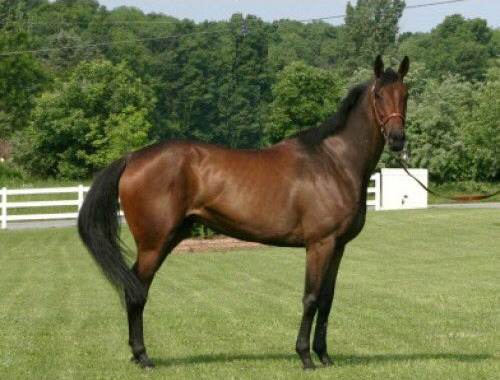
3. “THIS IS WHO I AM... But who am I?”
Believe it or not, but even by 2016, I still hadn't decided on what to call my little pony. I had already figured that whatever I was going to call her, it would abide by the same naming convention as Amy Rose, Miles Prower, and Ivo Robotnik, to help further add to the aforementioned notion that she's an ordinary lady who wasn't born with any superpowers. That, and because “___ the Horse” doesn't have the same ring to it as “___ the Hedgehog” or “___ the Echidna”.
So what did I do?
I looked up a list of female names for baby girls. Duh.
Well, it worked out, because I stumbled across “Lutrudis”, which was German for “strength of the village”. The more I repeated it in my head, the more it appealed to me. Sometimes, you can have various names that mean the same thing, yet one in particular will just have that perfect sound to it. That was me with this name. This horse being named Lutrudis felt right to me, even if I perfectly understood that it was perhaps a bit more exotic than your usual Sonic anthro name.
Not that it mattered too much, since I was quick to think of “Trudy” as a nickname for her, since in addition to being less of a mouthful, that name - also German in origin - had a similar meaning, “universal strength”. Fit her character and arc just as well.
So that was the first name sorted, but what about the surname? Well, when looking at a selection of appropriate words, I stumbled on “Hadeer”, and while the Arabic meaning of the name is slightly unclear - some sources say “adventurous”, others say “sound of the water falls” - I felt that the meanings associated with it were all equally appropriate regardless. Then I combined it with the first name, said the full name over and over again in my head, and thought “Yeah... this sounds correct.”
I realise the irony of a part-German, part-Arabic name being associated with an English character, but considering this is the same universe where a man who is presumably not Polish is given a Polish term for a name (Robotnik), I think we can let it slide.
4. “You guys know what EDS is, right?”
It's no secret that another friend of mine, @greenyvertekins, has Ehlers-Danlos Syndrome, which has a lot of unfortunate complications to it, but in laymen's terms basically means your body is more fragile than that of the average person's. This condition is rather rare, so much so that a majority of people have never heard of it. Sure enough, I was one of those people, until I became friends with Verte.
After hearing Verte talk about her EDS and what she's had to go through, along with doing my own research on the condition, not only was I considerably more informed on it, but I also felt very sympathetic to not only my friend, but everyone else who has had to experience it, particularly with how ignorant other people continue to react to it due to lack of public awareness. It made me want to do something in dedication, and in the process, a certain pony eventually crossed my mind.

This wasn't done for the sake of appeasing blue checkmarks on Twitter. I genuinely wanted to help raise awareness of EDS however I could, and I considered that perhaps its inclusion in my story would help do that, so long as it didn't sacrifice everything else about the story or forget that it was still a Sonic the Hedgehog story. Yes, it's a fanfic, and thus not as well known as a Hollywood blockbuster or a bestselling novel, but if even a few people were to end up learning about EDS through Lutrudis, I would be happy.
However, I was well aware that the idea of a Sonic character having EDS might be seen as a bit jarring, and if done badly, could potentially be accidentally insulting. So I made sure to consult Verte about it, saying that I would only go through with it if she was comfortable with me doing so, and made it very clear that I would try to make its representation as tasteful and as faithful as I can, despite the inherent nature of the Sonic universe that Trudy is part of.
By the way, horses in real life can fall victim to very similar disorders, so that was yet another reason why I went with that choice.
5. “Hey Benign, I'm shite at art, please help.”
I can't remember the exact conversation that led to it, but after I talked to @benignmilitancy about Lutrudis, she offered to bring the character's design to life through her mad art skillz. Initially I was hesitant to take up the offer, since I felt guilty about having to rely on someone else to show people what my own character looks like, but I was giddily honored by the offer and decided to agree as long as she was willing. Luckily for her, she wasn't working with a blank canvas so to speak, as I had a relatively complete image in my mind regarding what Trudy would look like, having already reasoned to myself why this or that would apply.
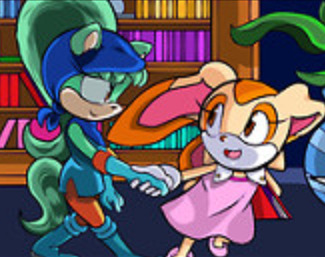
When putting my vision into words to Benign, I mentioned that...
- Since Trudy is the same age as Rouge, logically that should mean she's given a similar mature build as the latter, as opposed to the pipe limbs you see with the other female characters. Since Trudy spends a lot of time with Amy and Cream and has a lot of motherly interactions with the latter in particular, it helps signify that she's older than them.
- Being a horse, she would have two slits for nostrils rather than the usual dot nose that most characters have. Similarly, though you don't see them most of the time anyway, her feet are grey hooves, but they abide by the usual Sonic-style feet rather than being more realistic ala Clove's hooves, if only because the latter didn't look right for this character IMO.
- To add to her gentle warmth, her eyes would be a honey shade of brown. Just like how Cream has brown eyes. Again, it's like poetry, they sort of, they rhyme. Every stanza kinda rhymes with the last one. *shrug* Hopefully it'll work.
- Since EDS tends to apply several subtle physical traits to those who have it, at least some of them should logically apply to Trudy as well. Those with EDS often have a bluish-grey tint to their sclera, and they also tend to have paler skin than most, so Trudy would have those qualities too.
- To emphasize her love for Mother Nature and all its amazing sights, and also to contrast with Amy and Cream's colour schemes, Trudy herself would be green, albeit a more gentler green rather than the brighter tones of Vector and Jet, while her clothes would be blue, with slightly different shades depending on the clothing to prevent her from looking like a drab curtain. After a few initial sketches, Benign eventually suggested that some of her clothing could be changed to brown to balance out her overall colour scheme, as well as to further add to the subtle nature motif by having brown (trees) go along with blue (water) and green (grass). Needless to say, I wholeheartedly approved of this idea, and decided that the best placement for the brown sections would be for her leggings and glove cuffs.
- Speaking of, as a nod to her equine status, she would wear leggings that could pass off as Equestrian jodhpurs. (Not that she has an aversion to wearing skirts or dresses, since she's girly and tomboyish in pretty much equal measures, compared to how Sonic females usually lean towards one or the other.)
- People with EDS are unable to wear heels since they can hurt their feet, so heels were out of the equation for this little horsie. But I also figured that regular shoes or sandals wouldn't mesh well with the rest of Trudy's clothing, so I went with boots that were flat at the heels. They can allude to her adventurous streak AND allude to how there's a lady willing to kick ass behind that quiet, mellow, introverted demeanour. Plus, much like how being stomped by a real horse's hoof would be very painful to put it mildly, so too would being stomped by this horse's boot.
- Seeing how Trudy's arms have permanent scars on them - permanent scars being another common effect of EDS - she would wear elbow-length gloves over them, since she wouldn't be comfortable with showing them publicly. Note however that she would still wear long gloves even if she didn't have those scars, since they genuinely happen to appeal to her fashion tastes as well. Covering the scars up is just a bonus. And since long gloves are often associated with royalty and high class, they're also suiting for a lady who lives in a fancy castle (despite not being royalty).
- Her hair is kept in a big bouncy ponytail, not unlike Coco Bandicoot or Shantae, since it's both cute and tomboyish... that and because the visual pun of a horse with a ponytail was too good to resist, let alone it humorously mirroring the general shape of her actual tail.
- To contrast with Sonic's spiky quills, a lot of Trudy's design is emphasized to have a round quality, such as her tail, her ponytail, and her sloped ears. To add to this design philosophy, she would wear a headscarf similar to Wave's. Me and Benign contemplated on whether Trudy's muzzle should be more blocky like that of a real horse, before we agreed that the softer muzzle fit both the round aesthetic and her general character better.
- Trudy has trouble breathing in colder temperatures, and she also has a sensitive nose that reacts strongly to heavy scents. As such, she would have a bandanna that she could cover over her mouth and nose to help out with either of those things whenever the situation called for it, or any other scenario where she deems it appropriate. It helps that a bandanna suits a horse anthro anyway.
Truth be told, I was worried that I was coming off as too demanding. But Benign assured me that giving all these details helped rather than hindered. In any case, I was more than pleased with the final result, as it was precisely spot on to what I had in my head, although even her initial sketches during the work in progress were great stuff.
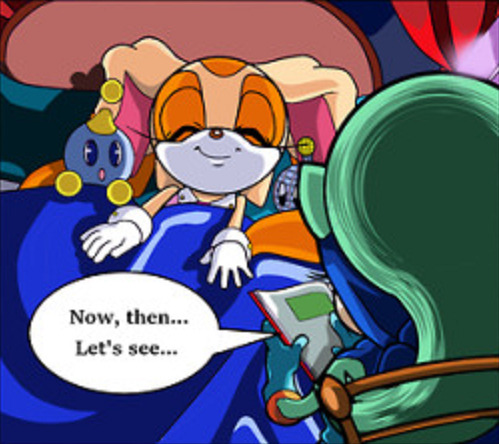
6. If Amy uses a hammer, then Lutrudis uses...
Trudy has surprising arm and leg strength despite her appearance, which is mainly due to her horsie genes. But since she's still got EDS, it's still wise for her to equip herself with a weapon or two to even the odds. I contemplated a few ideas in this case, including a quarterstaff, but ultimately I decided that the following would be a little more interesting, while still remaining appropriate for the character in question.
I thought to myself “What's stopping her from having two weapons, one for short-range, the other for long-range?” I decided on the long-range weapon first: bow and arrows, the latter of which would eventually include the Ethereal Zone-powered crystals inside the cavern below her castle. Goes without saying that a bow suits her elegance and how it can be used from a stealthy distance, and the use of the crystals and their different abilities also helps to keep the reader guessing on what exactly is the nature of the elusive Ethereal Zone itself. I also reasoned that Trudy using a bow was a nice contrast to Amy's hammer, although I'm aware that Amy herself used a bow in the Fleetway comics. But no one uses a bow in the games (yet), so it's fine, right?
As for her short-range weapon, I thought it'd be funny if she had a whip that resembled a riding crop. Not only would it be used to give Eggman's robots the Simon Belmont treatment, it could also extend up to a certain distance to help grapple onto things and allow her to overcome areas that would otherwise cause complications for her body. Is it a bit ludicrous? Maybe, but so is a blue hedgehog fighting a Roosevelt lookalike. You just kind of have to live with it.

So there you have it! Everything you need to know about how Lutrudis Hadeer's name, species, design, and EDS came to be finalised. Now when you turn her into a monkey without my knowledge or permission for the sake of dunking on her because you don't approve of me making fun of Kingdom Hearts rejects, at least you'll have a better idea on what you're actually talking about. :^)
64 notes
·
View notes
Photo
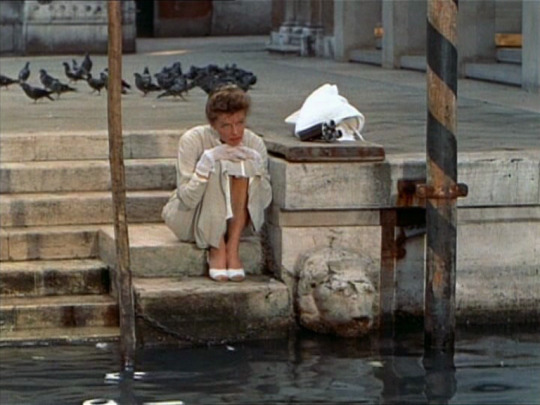
With baseball quickly approaching (for who knows how long), time for a pandemic installment of Classic Movies Everyone’s Seen But Me!
Summertime (1955)
David Lean works small (for him) in terms of both running time and vistas. He does a wonderful job with Venice, making the city practically a character in its own right -- and as someone who knows Venice well and loves it, I only caught Lean cheating on the geography a couple of times.
The real star isn’t the setting but Katherine Hepburn. Hepburn plays Jane Hudson, a middle-aged secretary from Akron, Ohio, who claims to have given up on romance. She hasn’t, of course, but it appears as if romance has given up on her -- Jane is a third wheel for the movie’s other couples and feels left out of even men on the make’s appraisals, spending the early part of the movie bonding with a street kid and the widow who runs her pensione. I’d write that it’s the kind of part that wasn’t written for actresses in the 1950s, but it’s the kind of part that isn’t written for actresses today. Hepburn inhabits the character beautifully, letting you see Jane’s hesitation and heartbreak in piercing scenes that sometimes rely entirely on body language, and Lean gives her the space to work, even when it’s an uncomfortable experience. A near-flawless performance.
The love story feels a little slight at first, but the ambiguity about what you should feel is intriguing. (Apparently this was even more the case in The Time of the Cuckoo, the play upon which Summertime was based.) Extra points for the Code-evading shot that tells us two characters have consummated their relationship. It’s only slightly subtler than the famous conclusion of North by Northwest.
Here Comes Mr. Jordan (1941)
Claude Rains has a marvelous time as the title character, an unruffled bureaucrat in charge of the afterlife who has to fix the case of a boxer taken up to Heaven a bit too soon. (The film was remade in the 70s with Warren Beatty and called Heaven Can Wait, the name used in its first incarnation as a play.) Rains is terrific, but the rest of the movie is pretty forgettable: Robert Montgomery is genial but not particularly memorable as prizefighter Joe Pendleton, and the plot logic breaks down completely in the endgame.
The Adventures of Robin Hood (1938)
Another Rains vehicle, in he stars as the evil Prince John, scheming brother of Richard the Lionhearted and foe of Robin Hood, played (of course) by Errol Flynn. Rains somehow retains his dignity despite a horrific wig and some astonishing costumes -- there’s one black and silver getup whose shoes have to be seen to be believed.
But all the characters are wearing ridiculous things all the time, shown off via the movie’s thoroughly saturated palette. There are men-at-arms in purple and pink motley, the merry men’s green tights, Flynn’s honest-to-goodness bedazzled emerald top, a lady-in-waiting’s Fancy Shriner fez, and we haven’t even discussed the get-ups Olivia de Havilland sports. The costume designer whizzes past All Too Much before the first reel’s over and just keeps going. And the dialogue keeps up with the costumes. Robin Hood may be the campiest movie I’ve ever seen -- it makes The Birdcage look like Shoah.
Flynn is capable with a sword and performs his stunts with swashes properly buckling, but man oh man could he not act. He has two basic expressions: fighting and making merry, and looks a little lost when the story requires him to investigate whether a situation requires choosing between the two.
Fortunately that doesn’t happen too often, and you’ll have fun anyway. This is the template for about a billion adventure stories made since then, and it’s entertaining even when you’re not elbowing the other person on the couch to point out what was waiting in Claude Rains’s dressing room this time. Think of it as a live-action cartoon and enjoy the ride.
Love in the Afternoon (1957)
Audrey Hepburn is the innocent, cello-playing daughter of a Paris private investigator (Maurice Chevalier) who interferes with her father’s work by preventing an American playboy (Gary Cooper) from getting shot by a jealous husband, then pretends to outdo the playboy at his own no-consequences game.
The story is light and amusing, with Chevalier ably serving as the fulcrum who helps it turn into something poignant and more interesting at the end. (The voiceover as coda, by the way, was added for Code reasons.) And Billy Wilder (co-writing and directing) guides the ship with a light, skilled hand -- the scenes between Cooper’s Frank Flanagan and his hired band are particularly fun.
There’s a fatal flaw, though: While Hepburn has never been more luminous, Cooper is too old to be the leading man. Wilder knew this, using soft focus and dim lighting in an effort to be kind that just calls attention to the movie’s fatal flaw. Moreover, Flanagan’s neither particularly interesting nor pleasant, so you never believe Hepburn’s Ariane would actually be interested in him. (He’s rich, granted, but she doesn’t seem to care about that.)
Directors kept doing this to Audrey Hepburn in the 1950s: Three years earlier, Wilder stuck her with a half-rotted Humphrey Bogart in Sabrina; in 1957 she also had to put up with a mummified Fred Astaire in Funny Face. Beyond the fact that it’s creepy, it doesn’t work for those stories.
I’m going to look on the bright side: Hepburn deserves even more adulation than she gets, since she rises above her AARP romantic leads to carry all three pictures.
The 39 Steps (1935)
A clever early Hitchcock I found intriguing because you can see the visible language of film evolving before your eyes. Some scenes look utterly modern, with intriguing camera angles and blocking, but they’re right next to oddly static compositions, or scenes filled with cuts that cross the line for no apparent reason. But there’s also a justifiably famous transition shot from a cleaning woman’s horrified discovery to a train whistle, a tricky perspective change from inside a car, and some other nice surprises.
The movie is a prototype Hitchcock thriller, with a plot that carries you along provided you don’t ask too many questions. (Or any questions, really.) But the movie hits its stride surprisingly late, coming into focus once Robert Donat’s Richard Hannay winds up manacled to Madeleine Carroll’s Pamela. Hang around that long and you’ll be well entertained.
McCabe & Mrs. Miller (1971)
This one made my list because it was an inspiration for Solo, a Star Wars spinoff movie I think deserved a better reception and suspect will be viewed more fondly in time. Yep, that’s Warren Beatty’s fur coat that Alden Ehrenreich wears, and the bar Beatty visits in the town of Presbyterian Church is a dead ringer for the one where Han and Lando Calrissian meet over cards.
So that was fun. As for the rest, after my usual post-movie reading, I get what Robert Altman was going for. This is an anti-Western that relentlessly inverts the genre’s tropes, with the climactic gunfight happening not in the center of town before all eyes, but scarcely noticed as the townspeople rush to put out a fire.
But I found that more interesting to read about than to watch. I was never invested in Beatty’s McCabe or Julie Christie’s Mrs. Miller, finding them less memorable than a young visitor who runs afoul of trouble (Keith Carradine) or the lead bounty hunter sent after McCabe (Hugh Millais, exuding genial menace).
Still, the movie has a powerful sense of place, I keep finding myself thinking about it, and lots of people whose opinions I respect consider it a classic. So perhaps I’ll revisit this one someday. But for now, my conclusion is that I’m missing whatever gene you need to appreciate chilly, airless Hollywood art-house movies of the 1970s -- a movement, ironically, that screeched to a halt when Jaws and Star Wars introduced the era of the summer blockbuster.
4 notes
·
View notes
Text
Let's talk about Bowsette as a trans icon.
This post/essay/think-piece/idological-wankery (delete where appropriate) is going to assume you know who Bowsette is. The Bowsette hype train has already come and gone in less than a month so I'm late to the party by this point; if you're reading this some time in the far future for some reason you may want to go do some quick googling as a refresher (might want to keep safe-search on).
Laying my own context on the table: I'm a Trans woman.
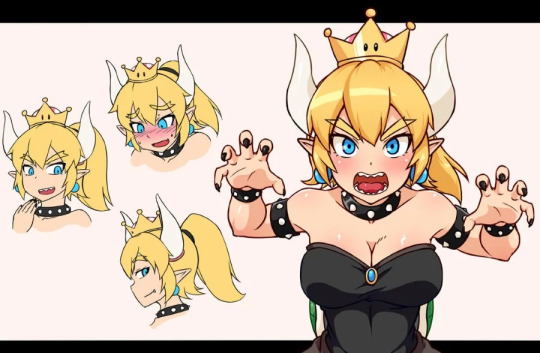
The sudden and widespread proliferation of Bowsette has been nothing short of inexplicable. Off the top of my head her rise to temporary dominance in the Mario fanbase is unlike anything before her. The closest two examples that come to mind are Coldsteel the Hedgehog from the Sonic fanbase and Doctor Whooves of My Little Pony fame. But those two characters don't posses the same invisible origins. Coldsteel was a meme, an intentional parody of the fan-creation phenomenon that has lead to the "_____ the hedgehog" game being the most fun you can have with google, and Doctor Whooves (while his personality and backstory are a fan construction) was still based on a background extra who was originally conceived by the show, not its fans. Bowsette's original was in no way directly provoked. The Super Crown was revealed as a tool that can turn Toadette in to Peach, some random twitter user made a standard fan comic where the crown was given to Bowser, and people took to it.
And because we live in 2018, it naturally got sexual very fast. A friend of mine once said "I like Bowsette, but I'm not a fan of the male-gazey-ness" (not quoted verbatim) and that sums it up nicely. There is a lot of porn of Bowsette out there, and now that her icon as a fun novelty character has passed her time as the champion of fan-created erotic pin-ups has begun. Bowsette has become one of the most notable times where a fictional character who is arguably transgender has entered the male gaze as an icon of sexuality whilst not having an undercurrent of fetishism to it. There's no great calling for Bowsette porn where she has a penis. The only ever reference to her Bowser-based past is for some occasional gags which aren't constructed to shame the contrast between Bowser and Bowsette. And the wide variety of the feminine traits and masculine traits in her various portrayals show a very neutral pallet of preconceptions her the artists and fans are going in with. I say arguably because we're only talking symbolically, not literally. Unless we ever got an explanation of the mechanics of Toadette's Super Crown then there's no literal grounding for this analysis. Keep all that in mind, we're talking symbolically.
The fact that no one in Bowsette's fanbase really seems to care about this fact is actually kind of fantastic news for Trans folk out there. The inherent problem with attempting to get Trans representation is one that is hard to talk about seriously thanks to the fact it's the same argument people use for why there shouldn't be representation: it's hard to naturally include it in backstory without making it feel either too-defining or tacked-on. The longterm goal of Trans representation is paradoxically to make our own representation invisible; to try and reach a point where the fact a character could be Trans is textually irrelevant to what the audience is expected to think about them. For example: were there a blockbuster film released tomorrow where a character who presented male is the protagonist, then in a flashback scene the same character were to be presenting as female pretransition and that fact never brought up again, we'd all throw up our hands and applause the representation that we have a Trans lead character, since that is bringing us closer to a world where the exact same setup just makes us go "yeah, I guess".
Bowsette's symbolic transition is a part of who she is, and there'll always been that little pink crown on her head as a reminder of that, but it's not a *defining* part of who she is, and that's what's so important. It's the logical middle step between the seemingly contradictory states of "They're trans, hurrah!" and "They're trans, K." And the fact she's been taken too with both hands (or one hand, with the other heading pants-ward) shows it's working. Nuance often requires we remember that a group is in reality multiple uniquely operating consciousnesses but it's often helpful when wanting to gauge direction to imagine communities as a single person. And in this case the 'person' of society is happy to ignore the whole 'used to be Bowser' thing and just enjoy Bowsette for who she is. This has done wonders for my own self-esteem and I can't imagine I'm alone. Often times I've had trouble thinking of myself as a sexual being thanks to being Trans. Times where I've felt it have always felt *against* that fact, or when I'm lucky *in spite* of being Trans. Even though my partner has been good at reassuring me that they really don't care when it comes to getting freaky and she doesn't think like that; it doesn't stop the fact that media has taught me to think that she can only think of me sexually in the context of being Trans. Bowsette's reputation has been one of the first concrete pieces of evidence that maybe my partner is right and it is perfectly okay for me to be proud of my sexuality without that risk of inherent fetishism.
Of course this doesn't come problem free. Whilst the case for the Super Crown being read as a substitute for transition is one worth considering, it's still an oversimplification of the process to an unhelpful degree. It views the difference between Bowser and Bowsette as a binary state, the whole character shifts from the Bowser body to the Bowsette body with a simple operation. Trans persons in media have always had this concept floating around them that once the decision is made it's a single procedure and you're rockin' an hourglass physique. In reality it's a lifelong arduous grind towards some non-existence idea of what we need to be. Moving from one end of the gender spectrum to the other is not a linear progression but asymptotic, I have to spend the rest of my life with constant injection, pills, procedures and therapies that will forever bring me 'closer' but will never get me 'there'. Embracing Bowsette as-is as a great example of what a symbolically Trans character should be is going to come with a further perpetuation of the simplicity, and I know there will be people out there who won't want to include her because they feel the simplicity problem is bad enough without us accepting a character who's feeding in to it. But as we all know, the capacity for nuance goes down as the size of the group gets bigger and we need to take Bowsette with a grain of salt much like how we need to think of everything more critically than we tend to. That debate is more than worth having.
Obviously I'm not begrudging the existence of Bowsette directly because of this. We're talking about an extrapolation of an extrapolation, we're so far removed from the original intention of the Super Crown that trying to pin any of the negative consequences of Bowsette on the Crown is like blaming the Cow because your White-Chocolate Mocha tastes funny, but it's worthy context to consider when looking at what Bowsette means in the grander scale of where society considers Trans persons.
Bowsette hasn't magically removed all preconceptions of the life of a Transgender person: her sexuality not being considered a Transgender fetish isn't stopping the fact she's still in the 'fetish' category for other reasons, her non-canon nature means that the impact is only indicative of societal conceptions rather than corporate ones where much more of the battle still needs to be fought, and I've somewhat oversimplified how much of the fanbase truly *is* on board with Bowsette (it pains me greatly that the Waluigi fanbase is one of the notable ones with the conservative attitude towards her). But god damn she's interesting, and more than enough for now.
25 notes
·
View notes
Text
25 Best First-Person Shooter Games Ever Made
https://ift.tt/34Cqosq
Game genres go in and out of fashion all the time, but for nearly 30 years, first-person shooters have been one of the industry’s most reliable sources for blockbuster experiences that often help dictate the future of the medium.
There’s no one element that makes FPS games so brilliant, and that is, ironically enough, exactly what makes them brilliant. The history of the genre is written by developers who used a certain point of view and a gun or two as the basis for a variety of experiences that continue to surprise us even after we told ourselves that we’ve seen it all.
Those are the games we’re here to celebrate today. The best first-person shooters ever may have inspired each other, but each ultimately brings something special to the table that helps it stand out among some considerable competition. Many offer something different, but the one thing that most share is the feeling you get just from hearing their names.
Before we dive into the list, here are a few notes about the criteria used to make these selections.
Defining a first-person shooter can be tricky. An FPS must obviously have a first-person perspective and shooting, but when in doubt, we looked closely at the “shooter” part of the equation. The more a game emphasized shooting/combat as a core part of the experience, the more likely it was to be considered part of the genre.
How “fun” an FPS game is ultimately determined whether it was selected and how it was ranked among the rest, but innovation, historical significance, and longevity were all used as prominent “X-factors” to determine rankings.
Single-player only and multiplayer only FPS games were not necessairly faulted for lacking either mode. However, special consideration was given to games that did both well.
25. Superhot
Superhot is one part puzzle game, one part FPS, and one part cinematic gunfight simulator. This unique shooter is built around the ability to slow down time by standing still. Taking a moment to survey the situation is the key to victory, but only speed will save you in this impossibly stylish and devilishly difficult game.
Definitely play Superhot in VR if you ever get the chance to do so, but there’s no bad way to play one of the most creative and engaging FPS games ever made as well as one of gaming’s most potent shots of pure adrenaline.
24. DUSK
2018’s DUSK may be a tribute to several genre classics that came before it, but the way that this game so perfectly recreates the feeling of playing those games rather than how so many of them actually play today strangely elevates it above many of those FPS pioneers.
Even people who usually don’t like the “find the key, labyrinth levels, blistering pace” style of FPS game that DUSK pays homage to often find themselves hopelessly addicted to this game’s airtight mechanics, exceptional pacing, and how it reminds us that, above all else, game are meant to be fun.
23. Metro 2033
Metro 2033 owes a debt to some games that came before (including S.T.A.L.K.E.R.: Shadow of Chernobyl, which many members of the Metro 2033 team worked on), but when it comes to this style of atmospheric FPS game, it may still be the very best.
Metro 2033 embraced its survival horror concepts in a way that even the incredible entries into this series that followed were never quite able to recreate. The atmosphere in this game is so thick and intimidating that it can make you feel like your gasping for air as you play it, which makes it that much more impressive that you’ll feel consistently compelled to push forward no matter how daunting things become.
22. Borderlands 2
While I feel like the original Borderlands is honestly kind of underrated in the grand scheme of the franchise, it’s hard to deny that Borderlands 2 is when this series really found its footing and remains the game the Borderlands franchise is chasing to this day.
Not everyone was a fan of this game’s humor, but that desire to go this far over the top is arguably the reason why Borderlands 2 so confidently combined the best aspects of co-op games, looter RPGs, and first-person shooters. From its base campaign to its incredible DLC, this is still one of the best FPS adventures you can share with friends.
21. Far Cry 2
As the Far Cry series (and the FPS genre) continues to “evolve,” it’s easier than ever to appreciate Far Cry 2 and how so many of the things that this game was initially criticized for now feel like a breath of fresh air.
Far Cry 2 is a hostile game that is constantly trying to kill your through disease, often uncontrollable fires, a lack of resources, aggressive enemies, and a lingering bleakness that only grows more powerful as you begin to understand its story and world. It’s an oppressive game that forces you to think on your feet in ways that few other FPS, open-world, or survival games have ever equaled. I’d say I miss this Ubisoft, but honestly, this was a bold and brilliant experiment even for that studio’s glory days.
20. Wolfenstein 2: The New Colossus
I think the best compliment you can pay Wolfenstein 2 is to say that Wolfenstein: The New Order exceeded nearly every expectation possible and not even that game could prepare us for the places this sequel would go.
Wolfenstein 2 is the greatest tribute to excess this side of a cocaine party on ‘80s Wall Street. Just when you think you’ve seen the most shocking thing this game will do, it finds a way to up the ante time and time again. It certainly doesn’t hurt that it also improves the surprisingly tight action mechanics that helped make its predecessor such a sleeper hit.
19. Team Fortress 2
It wouldn’t be entirely accurate to say that nobody thought Team Fortress 2 was going to be a success. Actually, many people at the time expected it to be a very good game. Yet, few were prepared for just how engaging TF 2 would be and how its growth would change the video game industry forever.
Look beyond the ways TF 2 controversially moved us towards the “games as a service” era, though, and you’ll find that it’s simply one of the most mechanically enjoyably multiplayer FPS games ever made as well as a testament to the ways that personality can turn an already great game into something magical.
18. SWAT 4
What separates SWAT 4 from so many incredible tactical FPS games that came before and after? If I had to attribute this game’s brilliance to any one thing, it would have to be “level design.”
SWAT 4 uses its somewhat unusual premise (compared to other tactical FPS games) as the basis for some truly creative missions that somehow make seemingly common environments more compelling than even some of the most elaborate fantasy worlds. From infiltrating a cult leader’s camp to descending into the basement of a serial killer’s home, SWAT 4 constantly finds new ways to use its incredible tactical gameplay to surprise you.
17. The Operative: No One Lives Forever
It’s true that No One Lives Forever’s seemingly permanent residence in licensing Hell has only amplified the voices of those who call this 2000 FPS game one of the best ever made, but that doesn’t mean that Monolith’s spy shooter doesn’t deserve all the praise it gets.
The thing that impresses me most about NOLF all these years later is that it’s actually a comedy game. While being a genuinely funny comedy game is usually an accomplishment in and of itself, NOLF goes one step further by also offering one of the most creative and engaging FPS campaigns ever crafted. This game holds up favorably under even the most discerning design analysis, but its most lasting legacy is the smile it puts on your face.
16. GoldenEye 007
Perfect Dark may technically be the better game, but if innovation, historical context, and fond memories are all tie-breaking “X” factors, then GoldenEye 007 absolutely deserves a spot on any list of the best FPS games.
A million words have rightfully been written about what GoldenEye did for console FPS games, but I don’t know if it’s possible to praise this game enough for the ways it celebrated the unique joy of local multiplayer or the surprising strength of its single-player campaign. Some at the time may have written GoldenEye off as a lesser version of the best PC FPS games, but the years have been kind to the purity of this experience.
15. Battlefield: Bad Company 2
Bad Company 2’s multiplayer is chaotic, creative, memorable, addictive, and all of the other things you associate with the Battlefield series’ legendary multiplayer at its very best. What separates this game from the other amazing entries in this franchise, though, is the strength of its single-player campaign.
Bad Company 2’s loving embrace of destructible environments is perfectly complemented by an often dark sense of humor that you rarely see in military shooters. It’s hardly a surprise that some Battlefield fans are still chasing the high they got from playing this game for the first time.
14. Halo 3
Halo 2 was an incredible game that changed the console FPS landscape forever, but it was also a game plagued by development issues that led to an unforgivable crunch period, a campaign that fell well short of its potential, and some notable balance problems. Your fond memories of that game are well-deserved, but when it comes down to it, Halo 3 offers a more complete experience.
Halo 3’s incredible multiplayer is arguably the perfect version of Halo‘s legendary multiplayer and the kind of competitive game that’s easy to miss at a time when there are so few titles that try to do what it did. This brilliant sequel’s campaign also felt like a proper send-off for the series (even if it ultimately proved not to be), while Halo 3’s Forge mode brought the creativity and longevity of the PC mod scene to Xbox 360 gamers everywhere.
13. Titanfall 2
Before you decide to be too hard on those who can’t stop talking about Titanfall 2 and refuse to stop begging for a proper sequel, consider that Titanfall 2 may just be one of the most complete FPS games ever made.
Titanfall 2’s multiplayer arguably realizes the considerable potential of its predecessor, but it’s Titanfall 2’s campaign that often inspires fans to scream at you to drop everything and play this game. Few games from even the golden age of FPS campaigns rival the ambition and creativity of Titanfall 2’s narrative, and fewer still have nearly as much heart.
Read more
Games
25 PC Games That Changed History
By Matthew Byrd
Games
PC Gaming Innovations That Changed the Way We Play
By Matthew Byrd
12. BioShock
I’ll leave the “Is BioShock a first-person shooter?” debate up to you and instead focus on how BioShock used the core concepts of a first-person shooter to elevate the art of video game narratives through the often-overlooked benefits of environmental storytelling.
BioShock’s story and world explore the dark underbelly of the entire first-person shooter concept. Are our actions our own, or have we been forced into the perspective of a largely helpless instrument? BioShock may have followed in some pretty big genre footsteps, but that strangely makes it all the more impressive that it’s often seen as the definitive experience in this particular subgenre.
11. Quake 3 Arena
Many who doubted that Quake 3 could abandon the single-player campaigns of its predecessors and sell itself based solely on the appeal of its multiplayer deathmatch modes were typically silenced the moment they played the game and experienced its exhilarating speed.
Quake 3 emphasizes speed in a way that few games before and fewer since ever dared to. Slowing down is often a death sentence, but what’s really impressive about this shooter all these years later is the surprising depth of its seemingly arcade-like gameplay and how it challenges you to master a series of mechanics that are often tragically underutilized in modern multiplayer gaming.
10. Unreal Tournament
It’s still incredible to think that Unreal Tournament and Quake 3 were released just weeks apart, and it’s even more incredible to think that Unreal Tournament arguably beat Quake 3 at what some considered to be its own game.
Putting aside that debate for the moment, let’s just come together to praise Unreal Tournament for its mechanics, visuals, modes, weapons, and, most importantly, arguably all-time great multiplayer map design. This is simply as satisfying and intense as PC multiplayer shooters get.
9. Doom (2016)
It’s easy to forget now, but there was a time when most people were expecting Doom to be one of 2016’s great disappointments. Not only was the Doom franchise on the ropes at that time, but this game’s rather disappointing multiplayer beta left some fearing the worst
Instead, Doom turned out to be arguably the best first-person shooter of its era. Even if you were an optimist who predicted the ways Doom would so successfully harken back to the breakneck pace of the best games in this series, you probably couldn’t have guessed the ways that this game’s amazing soundtrack, humor, and genuinely incredible storytelling would effectively combine the best of retro and modern FPS games while raising the bar for the genre.
8. Call of Duty
With all due respect to the Medal of Honor franchise and its many great installments and lasting innovations, it’s a testament to the quality of Call of Duty that it offered such a definitive WW2 shooter experience that you now have to remind people that Medal of Honor was even a thing.
The Call of Duty team went for broke with this one and somehow found a way to turn the most intense moments in Medal of Honor: Allied Assault into an entire FPS campaign. Call of Duty challenged every perceived technical limit of its era and boasts level/campaign design that you could argue has never been bested.
7. Left 4 Dead 2
Left 4 Dead wasn’t the first game of its kind, but the co-op zombie shooter tapped into something that many of us never knew we wanted. Its blend of almost arcade-like action, incredible level design, cinematic presentation, and near-perfect difficulty made it an instant addiction for millions.
Well, Left 4 Dead 2 was all of that and more. It’s certainly the best game of its kind, but in the grand history of FPS games, the thing that really sets Left 4 Dead 2 apart is how easy it is to return to it all these years later and how the desire to play this one with friends just never seems to go away.
6. Counter-Strike
Released at a time when multiplayer FPS games were supposed to be as fast as possible, Counter-Strike bucked nearly every genre trend by forcing players to embrace a methodical form of gameplay where just a couple of bullets could determine a game. It was the kind of bold experiment that could only have come from outside the industry, and it was absolutely brilliant.
Counter-Strike is arguably the greatest competitive FPS game ever made. Even in its early stages, it was an intelligently balanced multiplayer experience that required a unique set of skills. Remarkably, though, learning the ropes in this game rarely felt like a chore. It’s one of the most important FPS games ever, and it’s certainly one of the best.
5. Halo: Combat Evolved
It’s a shame that the “Combat Evolved” part of Halo’s full name is so often overlooked as that’s really the thing that separated this legendary shooter from nearly every FPS game at the time. The methods you use to battle Halo’s Covenant enemies may seem standard now, but the way this title forced you to carefully consider your combat tactics against truly intelligent A.I. opponents really did help change everything.
Then again, how can you fault anyone for mostly remembering Halo for its multiplayer? 16-player LAN matches may seem humble now, but the fact is that even the biggest online multiplayer games can’t quite match the feeling of experiencing Halo‘s local multiplayer at its biggest and boldest.
4. Half-Life
Nobody was really looking for a game like Half-Life in 1998. Honestly, few people at that time could have envisioned such a thing. In an era where FPS games were defined by their heavy metal style, B-movie campaigns, and deathmatch multiplayer, the idea of a first-person shooter with a story to tell and a world to sell that wasn’t constantly sacrificing action for narrative seemed impossible.
Do you know what’s really impressive, though? Half-Life didn’t just use the FPS format to tell an incredible story: it did it in a way that redefined what we talk about when we talk about immersion in games. Few developers to this day are able to replicate that style of storytelling, and even if they were, fewer still would ever be able to innovate the FPS genre quite the same way that Half-Life did.
3. Doom
The often-cited “godfather” of FPS games really needs no introduction. There’s a reason why first-person shooters were called “Doom clones” for years after this game’s release.
What’s truly amazing, though, is that Doom did things in 1993 that modern game developers still struggle to recreate. Even an unmodded version of Doom still has the ability to grab you by the throat and not let you go until you’ve seen the end of its brutal campaign. Doom was certainly the first in a lot of ways, but the thing that matters most may just be the ways it’s still the best.
2. Half-Life 2
It’s been said that part of the reason why Valve has hesitated to finish Half-Life 3 is that they reached a point where they felt like the expectations for the game had become unrealistic and detrimental. Well, you could argue that Half-Life 2 was released under similar circumstances. How do you make a sequel to one of the greatest, most innovative, and beloved PC games of all time? How would that game ever meet expectations?
Well, Half-Life 2 didn’t meet expectations: it exceeded them. Half-Life 2 didn’t so much blaze a path forward for the genre as it leaped into the air and landed somewhere other developers couldn’t quite see but desperately wanted to be. This is a nearly perfect single-player game that does things with pacing and level design that honestly feel even more refreshing all these years later given how many studios have strayed from the light of this title’s brilliance.
1. Call of Duty 4: Modern Warfare
There are two eras of Call of Duty games, and each of them represents two distinct eras of FPS design. The first era (as represented by the first few Call of Duty games) was more about single-player campaigns and complimentary multiplayer options. The second era of the franchise focused on evolving a style of multiplayer that would turn this series into a global phenomenon.
Well, Call of Duty 4 is the game that bridges those two eras and somehow manages to feature arguably the best single-player campaign in FPS history and some of the best multiplayer in FPS history.
Even at a time when we were spoiled by incredible Call of Duty campaigns, Modern Warfare stunned people with its shocking story and brilliant missions (highlighted by the legendary “All Ghillied Up”). We didn’t know it at the time, but the game’s multiplayer would also go on to change competitive FPS titles forever and help turn this franchise into a multi-billion-dollar household name.
cnx.cmd.push(function() { cnx({ playerId: "106e33c0-3911-473c-b599-b1426db57530", }).render("0270c398a82f44f49c23c16122516796"); });
This is a complete FPS package that represents nearly everything we’ve ever wanted from this genre. It’s a true triumph that delivers in terms of multiplayer and single-player in a way that few games since have ever dreamed of attempting to replicate.
The post 25 Best First-Person Shooter Games Ever Made appeared first on Den of Geek.
from Den of Geek https://ift.tt/3qZivqt
0 notes
Text
The Life and Creativity of A Great Bethesda Artist
This article has been copied to this blog for backup purpose.
Date of Access: 04-May-2019
Author: Jonah Lobe
Orijinal Link: https://kotaku.com/the-life-and-creativity-of-a-great-bethesda-artist-1740993491
I couldn’t stop smiling one day in late 2005 as I was led through the darkened basement of Bethesda Softworks toward the little corner unit that was to be my cube. My geek barometer was pinging off the charts. I could scarcely believe that I was there.
The place looked like a laser-tag facility; the ceilings were high and black, the walls gray with accents of Zenimax Red. We strode past the programmers, the fishbowl meeting rooms, the designers and world artists, until we reached the final row: Character Art. There, in the far reaches of the office, was a cubicle bearing the name “Jonah Lobe.” I sat down, giddy and a bit stunned, and began day one of what would become a seven-year career at Bethesda.
But this story isn’t about that career. It’s about the man in the cube behind me, a man named Adam Adamowicz.
Although he worked in the farthest, darkest corner of Bethesda Softworks, Adam’s influence stretched across the length and breadth of the studio. What Adam taught me and so many others at Bethesda - about creativity and work ethic - has stayed with us ever since.
I’ve wanted to share my memories of Adam with you, the developers and players in the gaming world alike, for many years. With Fallout 4 around the corner, I think now is the time.

Adam Adamowicz was a concept artist. When I first started, he was the only concept artist at Bethesda, a company that builds landscapes and nations alike. His cube was small, and it felt even smaller because of the relatively large man who worked within it. The walls were tacked with ever-growing layers of sketches and illustrations.
In this temple to computer art, I couldn’t believe that Adam worked in traditional media. He used pencils, pens, markers, colored pencils and paint. What impressed me more than anything was the abundance of creativity on those walls.
Adam’s ideas, wrought fast and bold, practically burst off the paper. He was a living treasure trove of inspiration. He conjured people, beasts, landscapes, outfits and weapons. His creations were often complemented by fascinating and funny margin notes, like “apocalypse sandals,” or “vomits entrails for external digestion” or “’It’s just a space helmet, Jimmy!’”
Adam Adamowicz was a strange and colorful man. Physically, he was unexceptional—tall and strong-looking, handsome, with broad shoulders, pale blue eyes and a receding blond hairline. He stuck to faded T-shirts and jeans, eschewing branding or fashion statements of any kind. And yet, despite this mild appearance, he was crazy. Not really crazy, of course, but his eyes sparkled with demented humor, and the things that came out of his mouth were an unpredictable, mad-lib mix-up of the colorful and morbid. “That Mole-Rat wants to hollow out your body and use it for a toboggan,” he’d say, or “He’s like a voodoo mix of Boris Karloff and disco crabmonculus.” How do you respond to that?
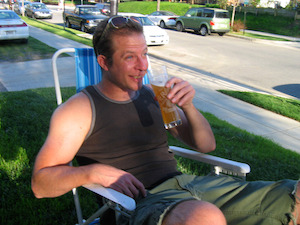
In 2006, while the rest of us were finishing up with the 2007 Oblivion expansion Shivering Isles, Adam began work on Fallout 3, and what followed was one of the most expansive and incredible brain-dumps of concept art I’ve ever seen. I was a character artist. My job was to extrapolate 2D drawings into 3D video game characters. I specialized in monsters. For any given monster, Adam supplied me with between three and 30 drawings, ranging from gestural pen work to detailed, full-color illustrations. From this wealth of material, I created monsters like the Deathclaws, Feral Ghouls, Radscorpions, and Mirelurks that were more novel and inspired than I could have possibly conceived on my own.
As I worked to translate Adam’s concepts into three-dimensional models, I showed him my works-in-progress. I wanted his artistic feedback, of course, but mostly, I wanted his approval. His responses surprised me. He was always positive and brimming with nice things to say, and yet I wasn’t always certain he loved what I had done. That bothered me at first, but as the years went by, I came to understand that it was not so much the faithful reproduction of his work that moved Adam, but my riffing on his idea. If he could see that his work inspired me, Adam was happy.
To Adam, concept art was not so much about aesthetics, but ideas. He treated his art like a series of drills. He put as much source material into his brain as he could, and then output as many concepts as possible. His goal was never to create a body of polished art. His products were always rough-hewn and raw. He mixed-and-matched ideas at an astonishing rate and never concerned himself with what might be considered acceptable. Who else would think to strap a model Enola Gay airplane to the top of a mini-nuke, or slap a cheese-grater to a Supermutant’s helmet? Adam didn’t care. Adam was fearless. Over the years, he created 10 times the number of concepts that we could ever use. He worked and he worked and he worked. And for what?
Oh, nothing much. Just that little thing called Fallout 3.

And then, a few years later, Skyrim.
Because my job at Bethesda was my first in the industry, it took me a while to understand that Adam was one of the best. His work provided us with the visual backbone for these unstoppable blockbusters. But if their critical and commercial success affected him at all, he never let it show. Adam was grateful for his job at the “monster factory.” He doodled through team meetings and yelled out “beer tickets!” on paycheck days. He was humble and he was gracious. He never complained, he never acted entitled, and he never took rejection personally.
And the most important lesson? Adam considered himself a student, through and through; always learning, always improving. His cube was filled with books: huge tomes of anatomy, ‘50s technology, architecture, and style. His appetite was voracious. He absorbed everything, and what he absorbed filtered through the quirky labyrinth of his mind to spill out—garbled and rearranged—onto the page.
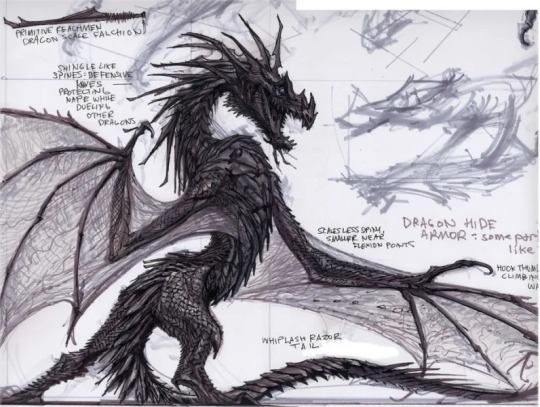
How did he do it?
I asked Adam once about his routine, and he described to me a surprisingly regular and disciplined way of life. In the mornings, on the bus to work, he sketched his fellow passengers, sights he passed, and any number of crazy ideas that came into his head. Once at work, he’d refill his coffee mug (his relationship to coffee bordered on religious), sit at his desk and get straight into it. Despite being one of the most popular guys at Bethesda, he ate lunch at his desk on most days, eager to get back to work. He worked all day, powered by banter and coffee, and then, on the bus ride home, he’d draw some more. Afterwards, he’d visit the gym (exercise was important to him), make himself dinner, pop open a bottle of wine and absorb himself in more personal art projects, painting and sculpting.
“Have no fear of perfection,” said Dali, “You’ll never reach it.” Adam took that lesson to heart. He had no fear of the blank page; he did not fear failure. He wanted to learn. He wanted to grow. Unbelievably, over the course of his time at Bethesda, he got better and better.
And then, one day in the fall of 2011, a few years after the development team had moved up to the sun-drenched upper levels of the building, I passed Adam in the hall outside of the art pit. We stopped to chat, as we often did, and when I asked how things were going, he complained that his shoulder hurt. Negativity was unusual for him, but as I watched him grimace and rotate his arm, it never occurred to me that I should be worried. Adam was a big guy, after all, forty-three years old and active. What was a sore shoulder to a guy like that?
A few weeks later, however, Adam left work for health reasons. Weeks went by, then months. I kept popping in to the art pit, anxious to see him again, to welcome him back. But the lights around his desk stayed off, his chair remained empty, and the little rubber-toy nun on his wall—”Squeeze nun for service”—stared back at me, silent and unsqueezed. The word I kept hearing around the office was “cancer.”
A few months later, he was dead.
We didn’t touch his desk. I’m not sure if there was even a discussion about it (though I suspect our head of game development, Todd Howard, had something to do with it). We just left it alone, like a holy place, somewhere to worship at the feet of creativity.
Time stretched by, and his room remained wallpapered with his art; incredible as always, bursting with color and inspiration—except now, nothing was changed or added. The lights stayed off. The only difference was that his fish tank of plant-growth had become a choked mess, one which no one bothered to clean up, since it was agreed that this was probably what he would have wanted anyway.
I left Bethesda in the fall of 2012
By then, Skyrim had shot to the top of the charts, and Fallout 4 was on its way. Professionally, I felt like the boy at the fair who’d just won the giant stuffed panda, and I wanted to leave on a high note. My soon-to-be-wife was in her third year of law school in New York City. I wanted to be with her, and I had dreams of becoming an author. I wanted to grow in ways I’d never known before, to immerse myself in the act of creation, and to build a world, by myself, from scratch.
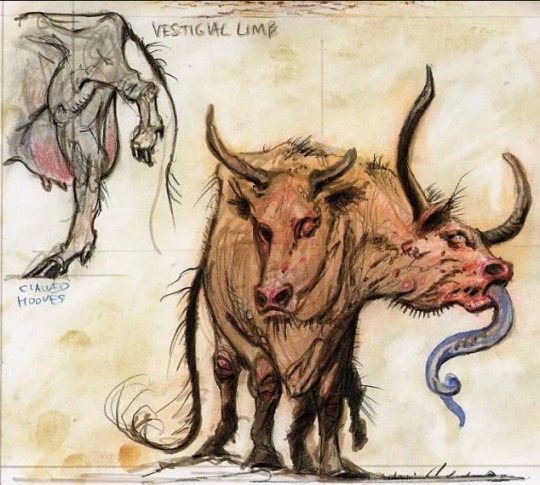
So what does that mean, exactly, to be creative?
It’s been three years now since I left Bethesda, and I’ve had a lot of time to reflect on that question. Creativity is such an elusive trait, one difficult to foster. How does one reach into one’s mind – limited, as it is, by finite experience and memory—and bring forth anything original? Adam did that all the time. What was it that made him different?
Steve Jobs once said that “Creativity is just connecting things.” While I doubt Adam was a fan of Apple—I’m not even certain he owned a cell-phone— I can’t help but think that this is an apt description of what Adam did. Flipping through his work, I was always struck by the bubbling confluence of subjects, a fearless fusion of influences. He developed his artwork using a range of tools: pens, markers, colored pastels. His creations were a collection of distinct and disparate ideas. When designing an original gun, for instance, Adam didn’t focus his research on the study of other guns, but on tesla coils, industrial power tools, or lab equipment. When designing outfits, Adam employed chew toys and oven mitts, radios and asbestos padding. The results were messy, ridiculous, and utterly original.
Adam’s creative process went beyond mere design. It was Adam who taught me that characters were more affecting with unexpected nuance: the horrifying is more horrible when infused with comedy; the disgusting all the more stomach-churning when mixed with beauty. The Draugr were not simple mummies, but noble warriors rendered in beef jerky. The feral ghouls were both repellant and pitiful. The Deathclaws were cheetahs, long and lean and starving. And Fallout 4’s Supermutants are not lantern-jawed hulks, but long-bodied infant-men with muscles that sag like taffy. Understanding this confluence of appearance and emotion helped me realize designs more original than anything I could have otherwise produced on my own. I have learned that it’s because of these unexpected details that we remember these creatures.
Fallout 4 is around the corner.
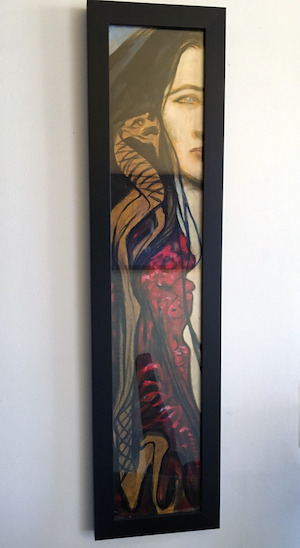
The last Bethesda game I played on which I hadn’t already worked long months was Morrowind. I’ve got monsters in this game—the Supermutants, for instance, and, of course, the Deathclaw—but the product will in every other way be new to me. My former teammates who have been working themselves to the bone for years on this game are very, very excited. Fallout 4 is a labor of love. And even after death, Adam’s fingerprints are all over it. He authored hundreds of original concepts for this newest game. He labored, as relentlessly as ever—for the game, for the team, and for you. He worked on it from his hospital bed. He worked until the end.
I have a painting of Adam’s in my office, one his mother sent me after he passed. A woman’s face; her skin like ivory, her hair raven-black. She carries a staff of gold, one that bears an eerie resemblance to the Dragon Priest staffs, and she is draped in a cloak of crimson flowers. Adam painted her on a sheet of cardboard, which a friend and I transported to the loading dock and sprayed with so much sealant that it’s become some sort of toxic polymer alloy. I look at it often.
When someone dies, they leave pieces of themselves behind. What we choose to do with those pieces becomes, in part, their legacy. I intend to honor Adam’s legacy.
So I exercise. I write for four hours every day. Afterwards, I draw, or paint, or model, or maybe I write some more. We eat dinner late in our house. I sleep, and tomorrow, I’ll do it again. I try not to fear the blank page. I try to endure the failures. I will learn, and I will grow, because I am a student, and I will always be a student.
My book is almost done. I’ll be searching for publishers soon, and I’m steeling myself for the inevitable rejections. It’s a grind, by turns demoralizing and exhilarating. When I’m tired, I take a break. I stand, and I stretch, and I stare at the painting of the ivory-faced woman. Her hair hangs in loose black tendrils, and her pale blue eyes are focused just above me and to the right, at some point I cannot see. If I turn and follow her gaze, I would see a digital print of my own work tacked to the wall just behind. I look for a moment, then scan the others beside it. They look drab. And yet, I can see that they’re better than I could have done a few years ago.
So I eat lunch at my desk, and then I get back to work.
Jonah Lobe is a writer and illustrator living in Brooklyn, NY. You can find him on Twitter at@jonahlobe, or down at your local coffee shop, furiously editing his novel, or on TwitchTV, where he hosts an illustration/gamedev stream weekdays at 4PM EST.
1 note
·
View note
Text
Top 10 Movies of 2016
Another year has passed and another Top 10 movie list must follow. I found this year to be a tad weaker than 2015, with many of my picks for this list not coming to theaters until November or December. This year started to show, quality wise at least, the blockbuster fatigue that constant releases in expanded universes (superheroes, especially) can evoke. Fortunately, once I narrowed down my list along with a few honorable mentions, it became very difficult to put them in order, which is usually a sign of some great films. I believe that every movie listed here will be a great addition to one of your movie night queues. So, without further ado...
Honorable Mentions
Deadpool
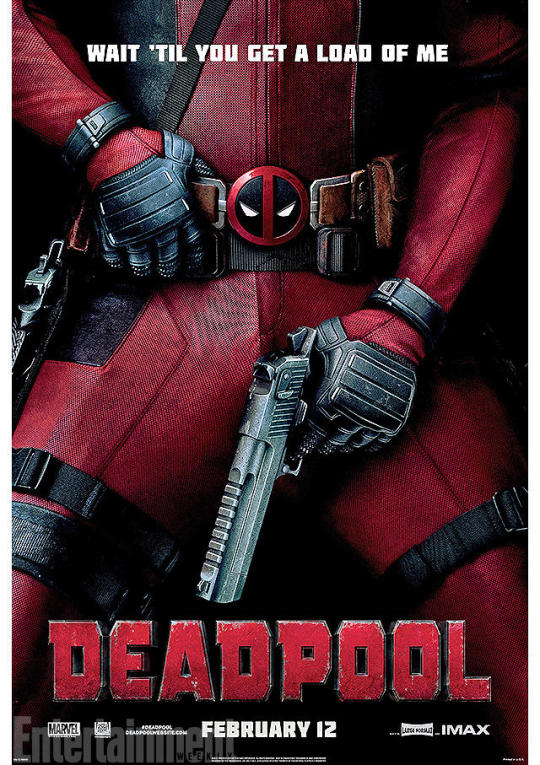
Superhero movies have flooded our theaters to the point that we’ll soon be getting over half a dozen in a single year. This year they ranged from the painfully mediocre (Batman v. Superman, Doctor Strange) to just bad (Suicide Squad). Deadpool was a nice breath of fresh air as Ryan Reynolds brought the much loved Merc with a Mouth to the screen. Deadpool is funny, lampooning everything from the superhero genre as a whole to the questionable decisions made regarding both previous appearances of Deadpool and the career of Reynolds himself. If only all comic book movies could be this faithful to the spirit of the character.
Rogue One: A Star Wars Story
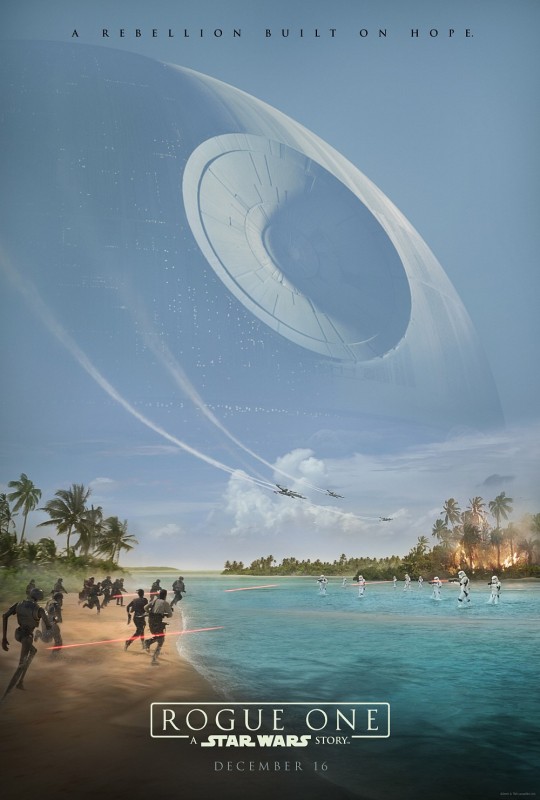
Another year, another Star Wars movie. This installment was a landmark film for the franchise in that it was the first major release not to focus on the main narrative following the Skywalker family. Instead, we were given the story of how Princess Leia ended up with the Death Star plans she had at the beginning of A New Hope. We get a look at a different side of the universe not particularly focused on magic space wizards but instead on real people fighting the threat of the Empire. Felicity Jones leads a great cast in a solid movie that has one of the best third acts of the franchise. Alan Tudyk stands out as a reprogrammed Imperial droid that is loyal to the Rebellion but throws shade like no other. While not all characters were developed fully, in the end, Rogue One stands as the best blockbuster of 2016.
The Top Ten
10. Manchester by the Sea
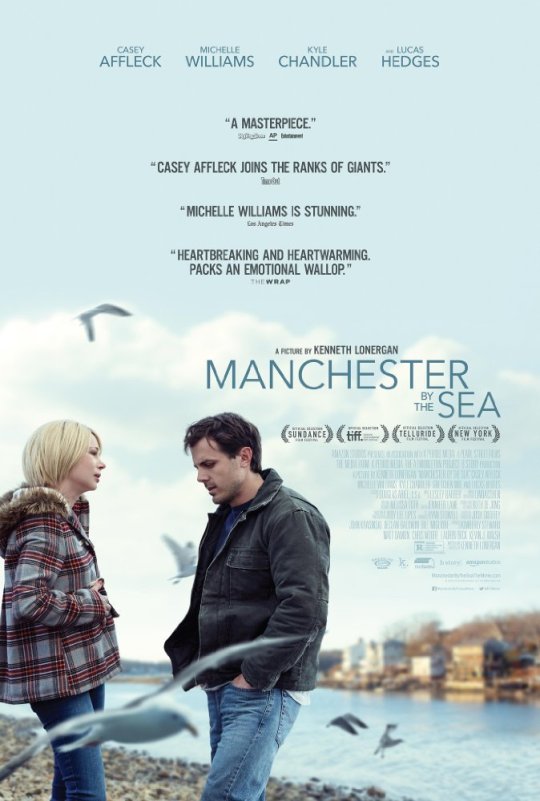
Grief is often the hardest thing to sell on screen, so making such a deep theme the focus of your movie is a bit of a risk. However, Kenneth Lonergan deftly writes and directs a unique view of grief for a unique family dynamic. Casey Affleck plays Lee Chandler, a handyman who resides in Boston away from his home of Manchester following a family tragedy. The death of his brother brings him home where he discovers that he is now the guardian of his nephew Patrick, played by Lucas Hedges. The film follows both of the men as they deal with death and all of the complications that come from it. However, their story is both painful and funny, as the movie makes for several reactions that seem all too real to those of us that have lost someone close. While the ending leaves several elements uncertain, Affleck and Hedges give strong performances that give us one of the truest depictions of loss ever set to film.
9. Pete’s Dragon
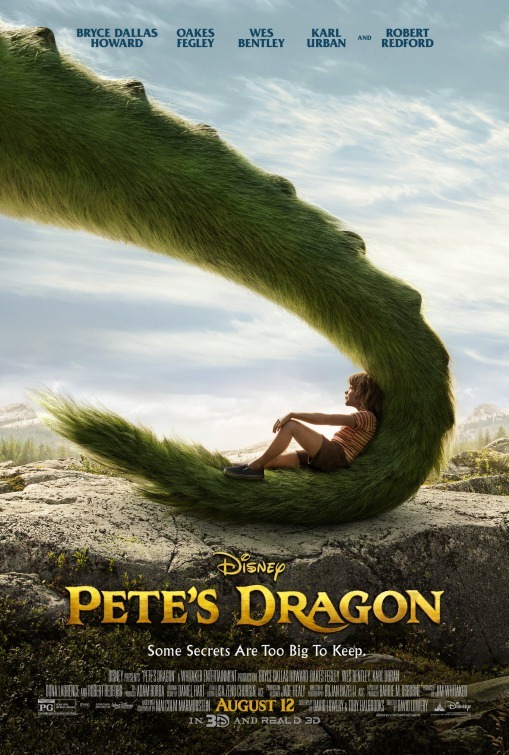
I hate the original Pete’s Dragon. When I found out a remake was being made the chances of me seeing it were slim. However, when it received several good reviews, I fit it into a four-movie day at the theater, mostly because I was curious. I didn’t expect to walk away with such a satisfied feeling. All of the awkward elements of the original (Animation that stood out in a bad way, sub par musical numbers, and Mickey Rooney) are gone, leaving a wonderful modern fairy tale about an orphaned boy and his invisible dragon friend that hit in all of the right places. Bryce Dallas Howard leads a great cast including Karl Urban, Robert Redford, and promising newcomer Oakes Fegley as Pete. A great story, seamless effects, and an ending that will bring tears to your eyes allows this movie to soar above its predecessor and claim its place on this list.
8. Lion
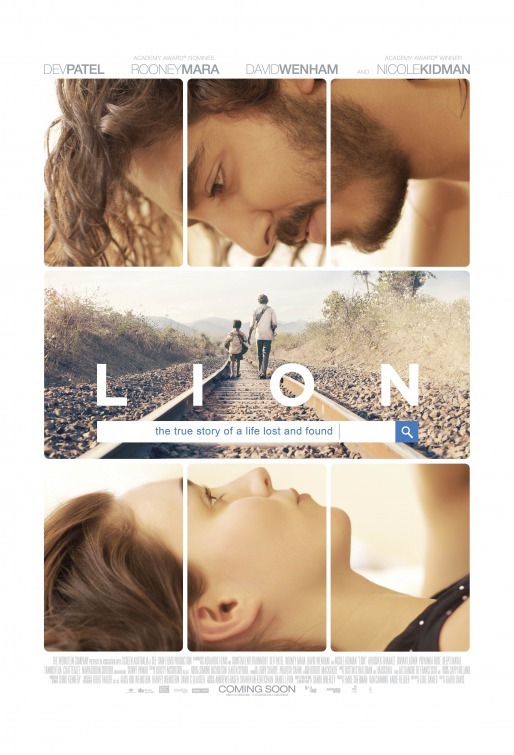
This movie snuck into theaters near the end of the year and I saw it on New Year’s Eve. It was a pretty great way to end the year. Lion is the true story of Saroo Brierley, an five-year-old Indian boy who, while searching for work with his older brother, gets transported across India to a region that is entirely alien to him, including the language. After Saroo finds his way to an orphanage, he is adopted by a loving Australian couple. 25 years later, Saroo is obsessed with finding out what happened to the family he lost. This may be the most genuine, human film made this year, as the audience feels the panic and fear of a strange new place with young Saroo, and the hope and frustration plaguing his adult counterpart as he searches one of the most populated countries in the world for a single small village. Dev Patel gives his best performance yet as Saroo in a film that will take you on quite the feels trip when both you and Saroo reach the conclusion.
7. Jackie
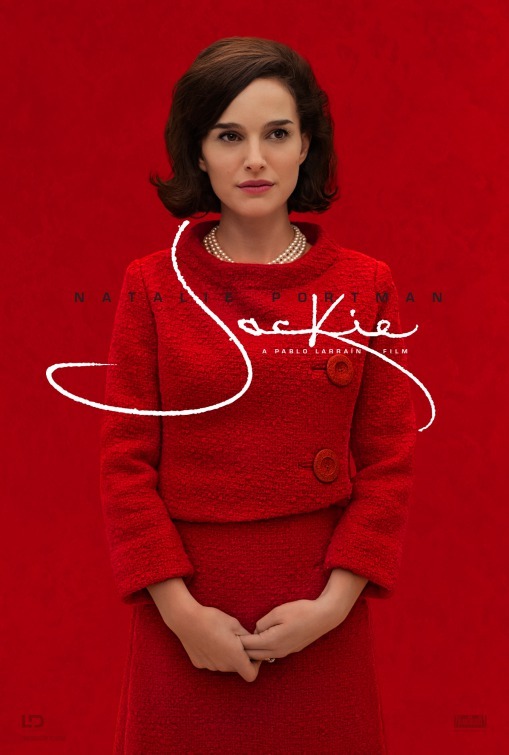
We all know what happened November 22nd, 1963. But have you ever thought about what the person most affected by that day did in the week that followed? Natalie Portman plays Jackie Kennedy, who is interviewed the week after her husband President Kennedy was assassinated. The movie rests completely on her and she doesn’t disappoint. She completely becomes Kennedy as we see a world that is rocked by loss on both a personal and national level. Kennedy must face everything that comes in the aftermath from being moved out of the White House for the Johnson family to trying to explain to her children why their father won’t come home again. There are times that I forgot I was watching Natalie Portman as I fell into the world captured so perfectly by Pablo Larraín. This film speaks not only to the humanity of Jackie Kennedy, but also to her amazing contribution to the legacy JFK left behind.
6. Arrival
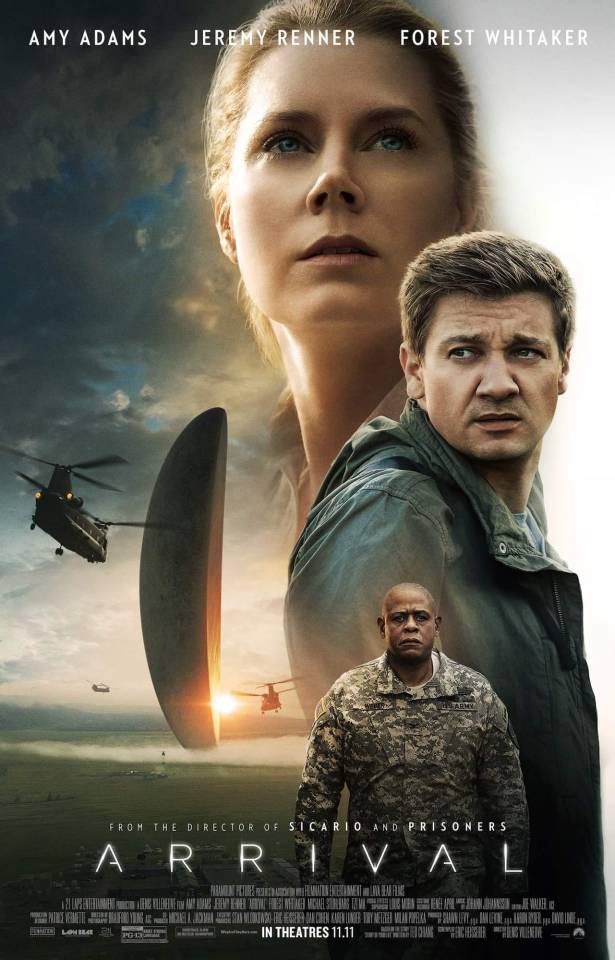
What would happen if we really were visited by alien lifeforms? A history of cheesy and often terrible movies (cough, Independence Day, cough) has built in the assumption that the aliens would be hostile and seek to destroy us. If aliens were to visit, I believe that Arrival shows us the most likely outcome compared to anything else. Amy Adams plays linguistics professor Louise Banks who is called in by the government to try to decipher the communications of alien visitors. Along with a brilliant physicist (Jeremy Renner), Banks must figure out the intentions of the visitors before other countries take hostile actions. This movie does an amazing job of displaying both our actual ignorance of other lifeforms and all of the possible directions we could take with it. In the midst of people not understanding each other, Arrival is a brilliantly made film that speaks to all people.
5. Moonlight

Similar in structure to Steve Jobs, Moonlight consists of three short films focusing on Chiron (aka Little), and his coming of age in a poor neighborhood that has no shortage of drug dealers. As a child, he finds a crack dealer named Juan (Mahershala Ali) who, along with his girlfriend, serve as loving parental figures in the place of his disinterested and drug-addicted mother. Juan helps Chiron trust people, which leads to him sharing an intimate moment with his high school friend Kevin. Circumstances lead to Kevin and Chiron separating but encountering each other as adults, leading to one of the most beautiful ending scenes of the year. Alex Hibbert, Ashton Sanders, and Trevante Rhodes give stellar performances as each stage of Chiron’s life. Such a simple story gives way to profound emotions that will resonate with you well after the film is over.
4. Loving

Speaking of simple, there was probably no more simply put-together movie this year than Loving. And yet, it managed to be one of the most profound films of the year. Joel Edgerton and Ruth Negga play Richard and Mildred Loving, a couple whose illegal interracial marriage led to the Loving v. Virginia Supreme Court case that ruled all marriage laws having to do with race unconstitutional. But that is not what the movie is really about. With limited dialogue and politics, Loving focuses almost solely on the relationship of the two main characters and the hardship they have to face from their home state. We learn about their dreams and the lengths they will go to in order to be together. The leads are absolutely fantastic and give you the entire weight of the story while spending only a few minutes of screen time in courtrooms. In a year where several films on this list took my heart, Loving is a true standout.
3. Zootopia
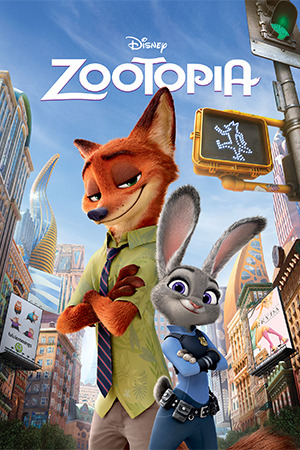
The reason that The Good Dinosaur didn’t succeed as much as everyone thought it would was because it failed to deliver on its premise of a world full of dinosaurs by showing us just a few dinosaurs. Zootopia doesn’t suffer from this problem, as the world of Judy Hopps (Gennifer Goodwin) and Nick Wilde (Jason Bateman) is a rich world of animals with different personalities, troubles, and ambitions. This movie would have succeeded as a fun movie on that alone. But Zootopia goes a step further and delivers one of the most profound messages of almost any animated film ever made. It not only highlights the obvious prejudices different groups of people feel toward each other, but also how we may not even be aware of our own unwarranted feelings of distrust and how they can affect people close to us. This was the movie that 2016 needed and that we’ll need for years to come. Also, who wants a full Gazelle album? (Raises hand)
2. La La Land
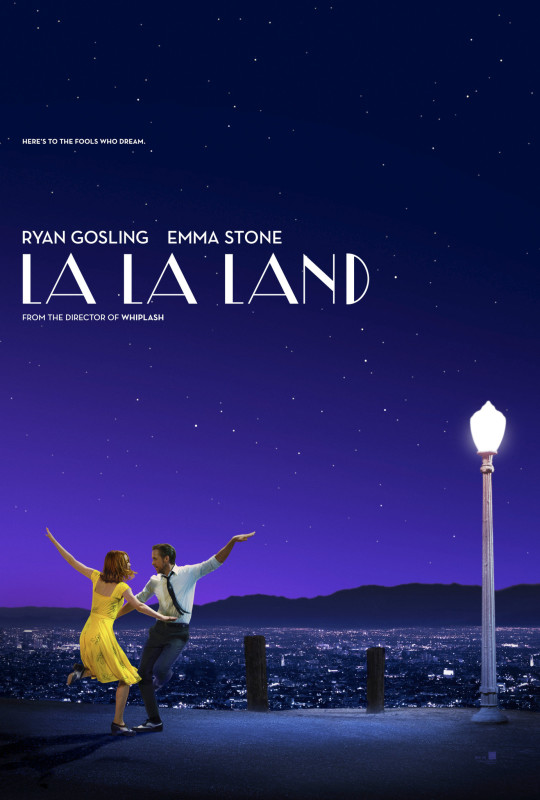
Earlier this year, when introducing one of my friends to my favorite movie, Singin’ in the Rain, I made the comment that “they don’t make this kind of movie anymore, and it’s sad.” Well, turns out that Damien Chazelle felt the same way and gave us an amazing film that serves as both an homage to the musical genre that preceded it and as a beautiful piece of art that will inspire future artists for years. Emma Stone plays Mia, a girl trying to pursue her acting dreams in LA, along with thousands of other people. She frequently runs into Sebastian (Ryan Gosling), an unemployed jazz musician who dreams of owning his own club. The two chase their dreams together to the tune of the best soundtrack of the year and delightful dance numbers and city backdrops. La La Land succeeds in every technical aspect as Los Angeles is turned into a magical, musical dreamland. Stone and Gosling go beyond their usual charm and give us amazing characters with surprisingly good singing voices that would make Fred Astaire and Ginger Rogers proud. And then the ending. Well, if the ending sequence doesn’t fill you with emotion, then you’re probably a robot.
1. Hell or High Water
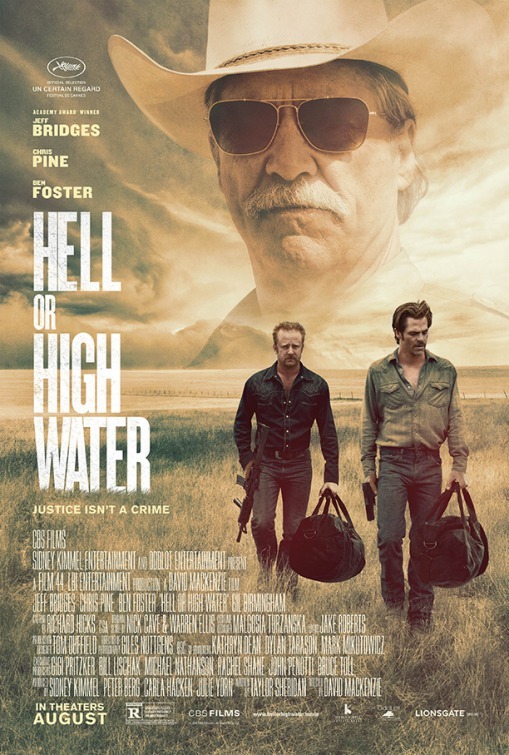
The biggest surprise of the year for me turned out to be my favorite movie of 2016. Hell or High Water is David Mackenzie’s neo-Western masterpiece that is perhaps the best possible step to take after the Cohen Brothers’ No Country for Old Men. The film shows Chris Pine and Ben Foster playing brothers Toby and Tanner Howard. When their mother dies and Tanner gets out of jail, the bank handling the loan for their mother’s farm seeks to seize the property. In order to pay off the bank that overcharged their mother for years, the brothers begin to pull off small robberies of the local branches. While authorities don’t see it as a priority, the crimes attract the attention of two Texas Rangers (Jeff Bridges and Gil Birmingham) and a chase across Texas begins. Every performance is incredible in this movie. Chris Pine shows his dramatic chops while giving the best performance of his career (so far) and Jeff Bridges is outstanding beyond even what you would expect. The cinematography shows off the gritty yet beautiful western landscapes yet never loses the scope of how the region has been hit by the advancement of modern times. But the true winner here is the best screenplay of the year as every character is able to draw you into a story that begs questions of morality and loyalty. While La La Land may walk away with all of the awards, Hell or High Water is my pick for Best Film of 2016.
0 notes